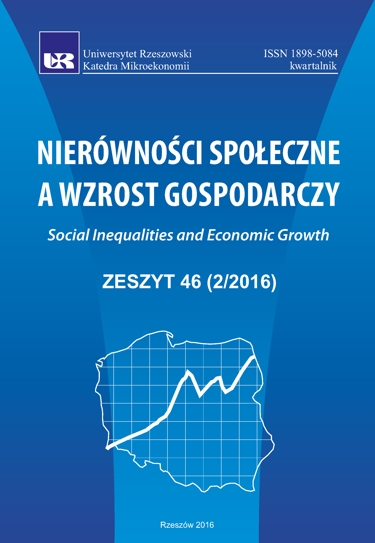Development of Human and Innovation Potential in Belarus
DOI:
https://doi.org/10.15584/nsawg.2016.2.30Keywords:
kapitał ludzki, rozwój innowacyjny, Global Innovation Index, Innovation Input and Innovation Output, Human Capital Index, gospodarka oparta na wiedzy, wskaźnik rozwoju e-administracji, jakość życia, strategiczne priorytety rozwojuAbstract
The object of the study is a human capital as a factor of sustainable development and socio-economic security of the economy. It is based on the innovation, efficient use of national resources and the relative competitive advantages of the country. The human capital is an important resource of innovative development. It is expedient to increase the role of investment in human capital, it is necessary for the development of modern information and communication infrastructure. Human capital is analyzed with the calculating of the international rankings which characterize the level of innovative development of the various countries of the world. They are: Global Innovation Index, Human Capital Index, Knowledge Economy Index, E-Government Development Index. Strategy to build and strengthen scientific and technological potential must be directed to the improvement of the efficiency of its use in the following triad of “man as a generator of new ideas – a competitive economy – environmental quality”. Improvement of the innovative activity results is possible through more efficient human capital; creating a highly business organizational climate. Measures on social and material support research and development of technological innovations are necessary to improve the quality of human resources in the country. Moving to knowledge economy requires the completion of system modernization and restruc-turing of the scientific sphere as a real economy, the formation of technology platforms as a communicator between the state, business and scienceDownloads
Download data is not yet available.
Downloads
Published
2020-11-10
How to Cite
Колесникова, И. (2020). Development of Human and Innovation Potential in Belarus. Social Inequalities and Economic Growth, 2(46), 466–477. https://doi.org/10.15584/nsawg.2016.2.30
Issue
Section
Articles
License
Copyright (c) 2016 University of Rzeszow

This work is licensed under a Creative Commons Attribution-ShareAlike 4.0 International License.


